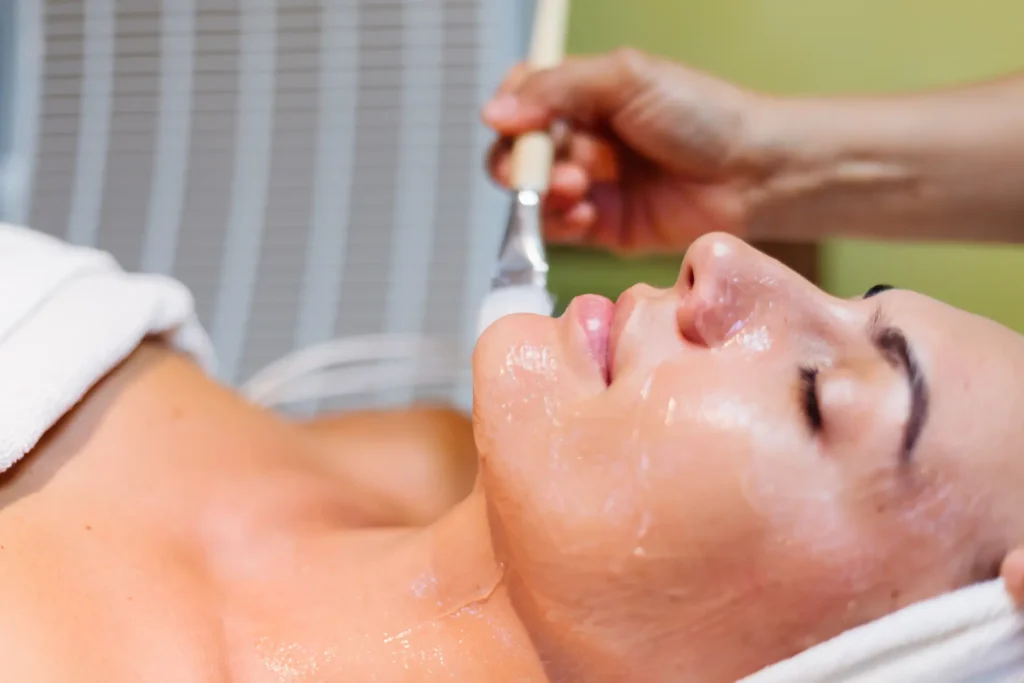Disclaimer: This article is for educational purposes only. Chemical peels are professional treatments whose outcomes can vary by individual. The statements here have not been evaluated by the FDA. Always consult a licensed skincare professional before proceeding with any peel.
What Is a Chemical Peel?
A chemical peel is a controlled application of a specialized acid solution—such as alpha-hydroxy acids (AHAs), trichloroacetic acid (TCA), or phenol—to exfoliate outer skin layers. By encouraging your skin’s natural shedding process, peels may help reveal fresher, more even-looking skin when performed under expert guidance.
Types of Peels (Qualified Overview)
-
Superficial Peels (e.g., mild AHAs)
-
Gently exfoliate the epidermis
-
May help improve rough texture and early signs of discoloration
-
-
Medium Peels (e.g., higher-strength AHAs or TCA)
-
Reach into the upper dermis
-
May support reduction of fine lines, mild acne scars, and sun spots
-
-
Deep Peels (e.g., phenol)
-
Penetrate to the deeper dermal layers
-
May assist in treating pronounced wrinkles or deeper scarring
-
Potential Benefits (Hedged Language)
-
Enhanced Cell Turnover: Early observations suggest peels can accelerate the removal of dead cells, uncovering newer skin more quickly.
-
Collagen Remodeling Support: Some studies indicate that medium and deep peels may encourage the body’s own collagen repair processes over time.
-
Tone and Texture Improvement: Peels can help even out mild hyperpigmentation or sun-induced spots when combined with proper post-care.
-
Acne Management: Specific peel formulations (like salicylic or glycolic acids) may aid in unclogging pores and supporting clearer skin.
These effects are investigational and may not be experienced by everyone.
Safety & Aftercare Considerations
-
Common Reactions:
-
Temporary redness, peeling, or tightness often follows a peel.
-
-
Possible Risks:
-
Hyperpigmentation or lightening in darker skin tones
-
Infection or scarring if sterile technique is not maintained
-
Heightened sun sensitivity—strict UV protection is crucial
-
-
Aftercare Essentials:
-
Apply gentle moisturizers and broad-spectrum sunscreen (SPF 30+) daily
-
Avoid direct sun exposure for at least one week
-
Follow any prescribed soothing or barrier-repair serums
-
Working with a Qualified Provider
-
Credentials Matter:
Seek a board-certified dermatologist or licensed aesthetician trained in chemical-peel protocols. -
Customized Treatment Plan:
A thorough skin assessment—covering medical history, sensitivity, and desired outcomes—should guide peel depth and frequency. -
Ongoing Monitoring:
Professional follow-ups help adjust aftercare steps and address any unexpected reactions promptly.
Key Takeaway
Chemical peels can be a valuable tool for supporting skin-renewal goals, but they carry both benefits and risks. For safe, effective results, combine qualified peel treatments with diligent aftercare, sun protection, and the expertise of a licensed skincare professional.


